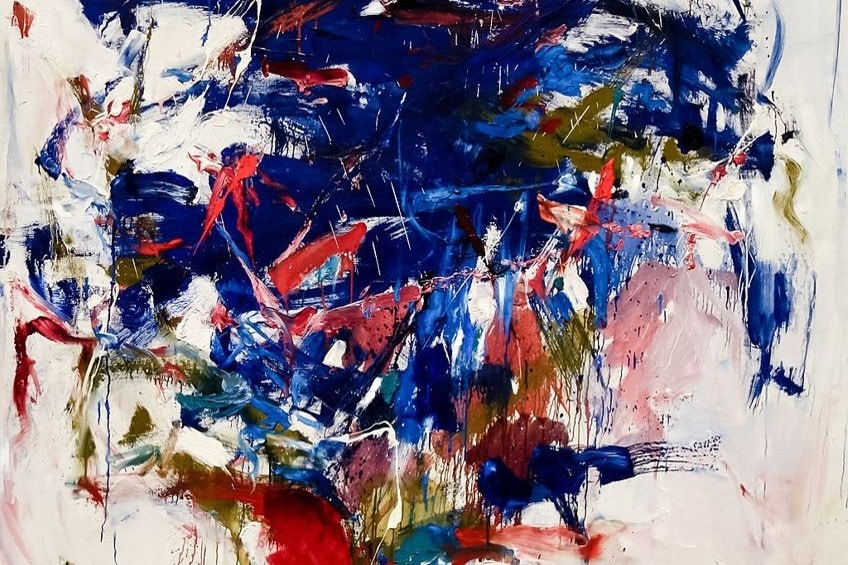Abstract Expressionism – The Art of the Abstract Expressionists
Abstract Expressionism art was never really a suitable title for the New York-based style that emerged in the 1940s and 1950s. It was intended to include not just Abstract Expressionist painters who covered their canvases with swathes of colors and amorphous forms, but also the works of Abstract Expressionism artists who assaulted their paintings with forceful visceral expressionism. Nonetheless, Abstract Expressionism art has been the most widely recognized label for a collection of painters who shared many characteristics. In this article, we will be exploring Abstract Expressionists and Abstract Expressionist paintings.
Contents
- 1 What Is Abstract Expressionism?
- 2 The History of Abstract Expressionism Art
- 2.1 The Emergence of Abstract Expressionists
- 2.2 Abstract Expressionist Painters in New York from the 1930s to 1940s
- 2.3 The Movement’s Formation
- 2.4 Abstract Expressionism Art Concepts and Styles
- 2.5 The Exploration of Color Field Painting
- 2.6 Action Painting
- 2.7 The Next Generation
- 2.8 After Abstract Expressionism
- 3 Important Abstract Expressionist Paintings and Artworks
- 4 Frequently Asked Questions
What Is Abstract Expressionism?
What is the Abstract Expressionism definition and which art movement was a major influence on Abstract Expressionism art? All Abstract Expressionists were devoted to art as self-expression, born of intense feeling and universal ideas, and the majority were inspired by the heritage of Surrealism, a trend that they adapted into a fresh style suitable for the post-war climate of worry and pain.
Because of their accomplishment, these Abstract Expressionism artists were able to dethrone Paris as the pioneer of artwork, opening the door for America’s dominance of the global art scene.
The History of Abstract Expressionism Art
In the 1930s, political unrest in Europe drew numerous notable Surrealists to New York, and also many Abstract Expressionists were greatly impacted by Surrealism’s emphasis on mining the unconscious. It sparked their fascination with myth and archetypal symbolism, and it formed their perception of painting as a conflict between self-expression and the disarray of the unconscious.
The bulk of the Abstract Expressionism artists attained maturation in the 1930s.
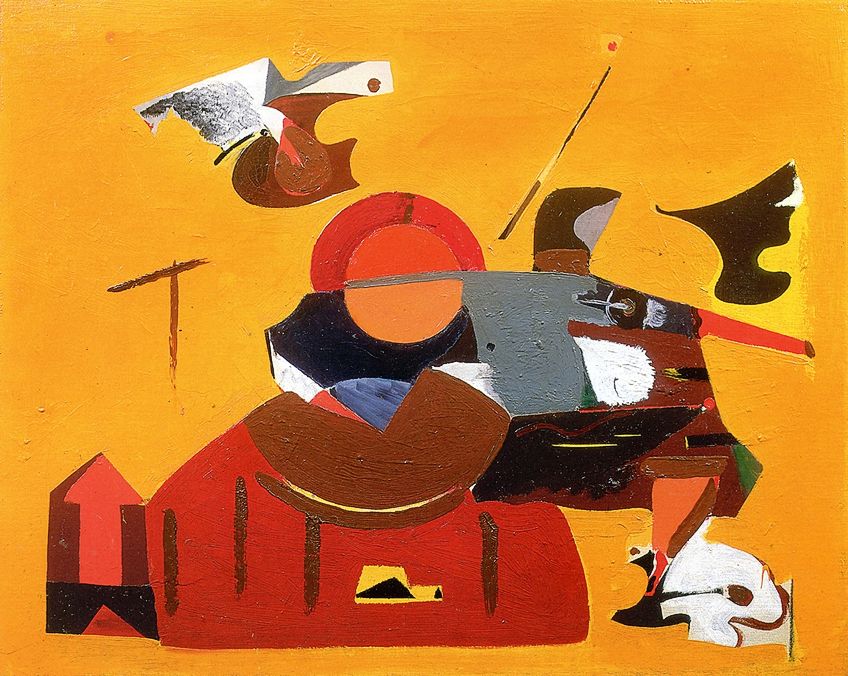
They were affected by the communist politics of the time and began to appreciate art based on personal experience. Few would retain their former extreme political ideas, but many would embrace the vocal avant-gardist demeanor.
The Emergence of Abstract Expressionists
The paradox that Abstract Expressionism’s origins were in the figurative art of the 1930s is only one of the movement’s numerous contradictions. Most of the painters who went on to become Abstract Expressionist painters in New York in the 1940s and 1950s were influenced by the Great Depression. These individuals developed as artists while working in techniques inspired by the Regionalist and Social Realist movements.
By the late 1940s, the majority had given up on such trends, but they had learned a lot from their previous efforts.
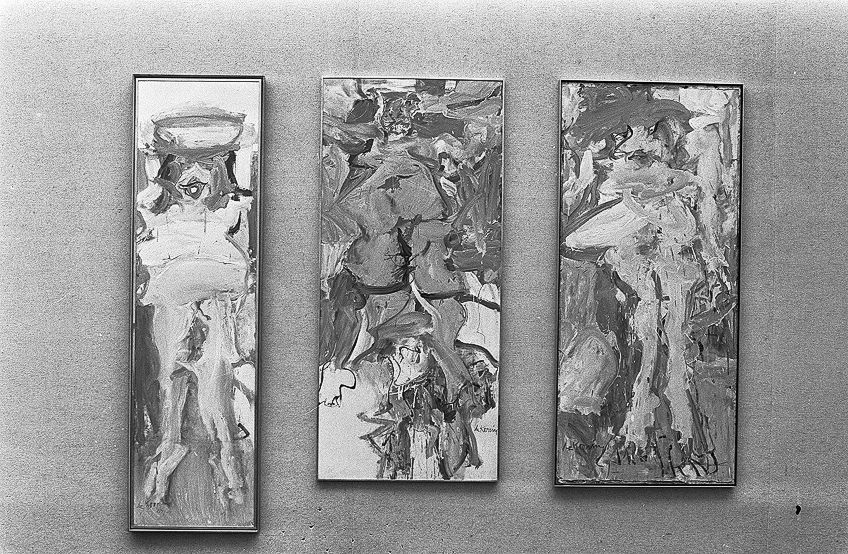
It strengthened their dedication to a form of work that is based on personal experiences. They would eventually be inspired to produce monumental-scale Abstract Expressionist paintings as a result of the time they spent painting murals. Many diverse individuals came together via their experiences working for the government-sponsored Works Progress Administration.
This made it simpler for them to form new groups in the late 1940s and early 1950s when the innovative aesthetic was being pushed.
Abstract Expressionist Painters in New York from the 1930s to 1940s
The 1930s saw an exceedingly complex system of galleries and museums that hosted significant exhibitions of contemporary art, benefiting the artists who called New York home. Exhibitions at the Museum of Modern Art included Dada, Abstract Art, and Surrealism, as well as a significant Pablo Picasso retrospective.
In order to flee political unrest and war, a large number of European modernists started moving to New York in the 1930s and 1940s.
Some of them, like the painter and educator Hans Hofmann, would have a significant impact. Hofmann spent the first decade of the century living in Paris, where he had the opportunity to meet painters like Picasso, Henri Matisse, and Georges Braque, who had built colossal names in New York’s art world. Through his in-depth knowledge of Cubism and passion for Matisse’s underrated Fauvism, Hoffman was able to convey many of their ideas to his students.
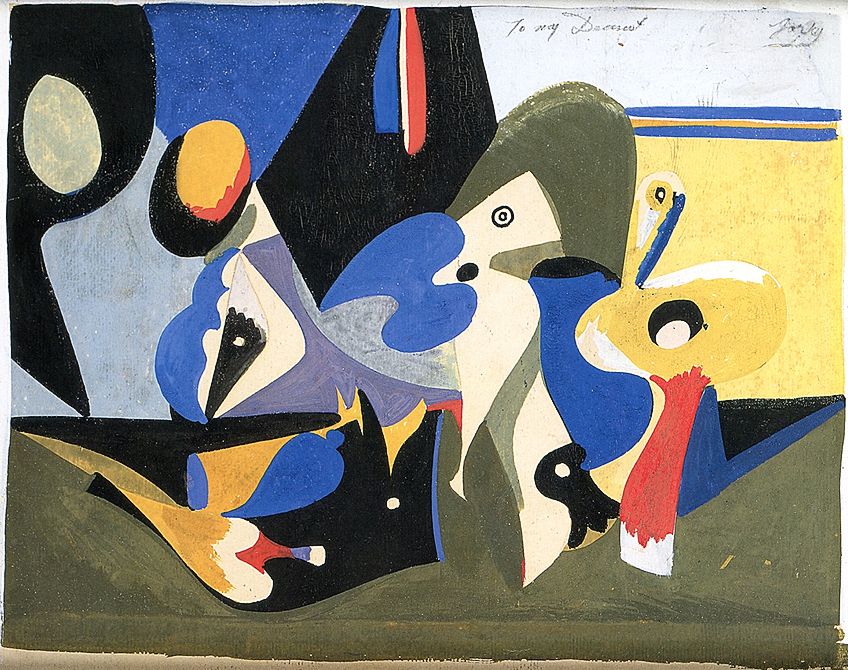
Because of all this activity, New York’s painters were quite educated about contemporary European art tendencies. Many people had inferiority complexes after it, although these were gradually dispelled in the 1940s. Many exiled European artists, including Salvador Dali, Arshile Gorky, André Masson, André Breton, Max Ernst, and Piet Mondrian, were personally encountered by the author. This helped erase part of the mythological reputation these artists had attained.
Many Americans were inspired to reject European influence, to create a rhetoric of painting that was suitable for their own country, and, last but not least, to lead sophisticated culture during a period when some of its oldest citadels were in danger as Europe suffered significantly under authoritarian states in the 1930s and later became embroiled in war.
Indeed, as author Mary Gabriel notes in her book “Ninth Street Women”: It would not have required much contemplation to determine that works of art made before 1940 were no longer suitable to express the postwar reality. War’s beginning rendered the fractured planes of Cubism meaningless, even though they may have predicted the destruction that comes with it. In the midst of the advent of fascism, the surrealists’ darkest terrors were brilliant meditations on the subconscious.
The Movement’s Formation
By the late 1940s, several conditions were in place for the formation of the new movement, notwithstanding how diverse and unrelated the work of its artists was. Clyfford Still is credited with establishing the style with his own shift away from figurative to large-scale, abstract art forms in the years immediately after World War II.
In 1947, Jackson Pollock invented the recognizable drip technique.
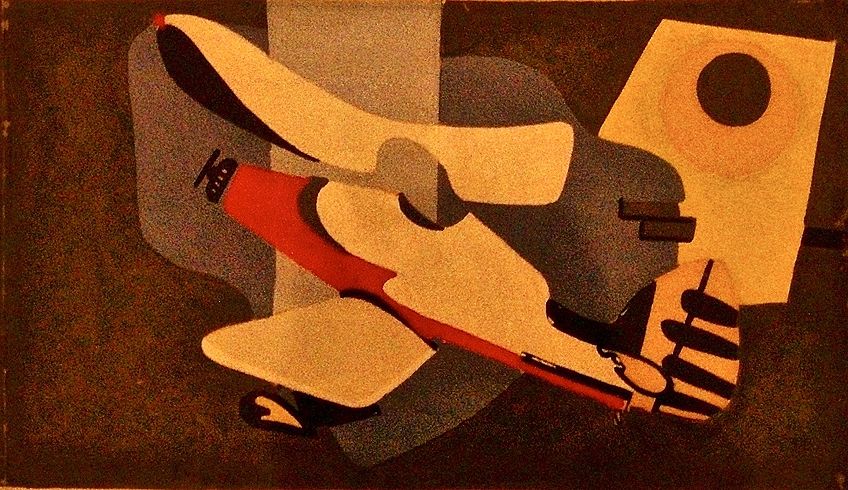
A notable show by Willem de Kooning was staged at the Charles Egan Gallery the next year, where he presented his paintings of women. He is renowned for removing composition, light, layout, and connections from his female portraits such that figuration became abstract. Barnett Newman had his artistic epiphany with the work Onement I, while Mark Rothko began to produce the “multi-form” works that would later become the pivotal pieces of his mature period.
American Painting Today – 1950, a Metropolitan Museum show of contemporary art, was boycotted in 1951 by 18 like-minded painters. They were then coerced into posing for a portrait with Life magazine and given the nickname “The Irascibles” as a result.
The piece popularized the term “Abstract Expressionism” and gave the movement a sense of cohesion and direction.
Abstract Expressionism Art Concepts and Styles
The themes and ideas of the Abstract Expressionists drew heavily from surrealism. The European movement’s overt Freudian symbolism unnerved American painters, but they were still influenced by its fascination with the subconscious, as well as by its streak of primitivism and obsession with mythology. The beliefs of the Swiss psychiatrist Carl Jung, who held that components of a human psyche had been passed down through the millennia by way of archetypal symbols, or primal pictures, which had become repeating patterns, piqued the curiosity of many people in particular.
Primitive motifs frequently appeared in Pollock’s work before he began creating his drip paintings. A melancholy wolf is layered with lines and swirls in his She-Wolf painting, which he claimed “came into life since I had to create it.”
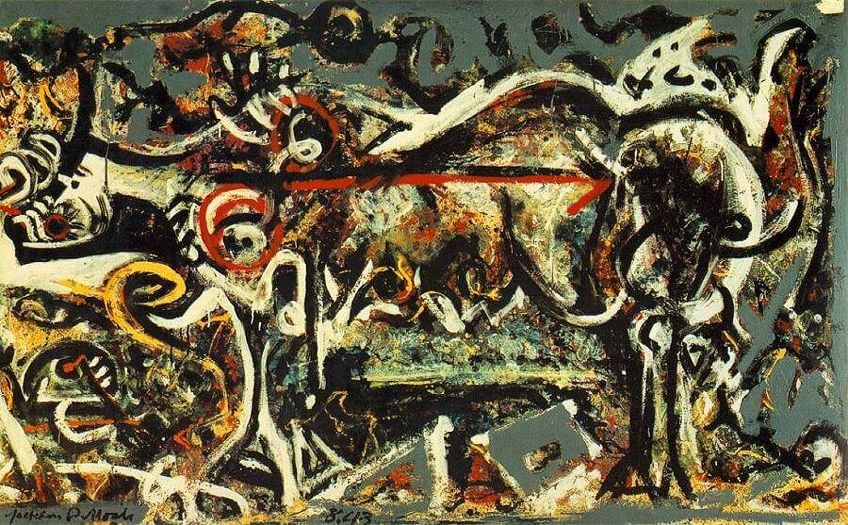
It has been compared to the story of Rome’s origin, in which the wolf breastfed the twin rulers Romulus and Remus, and was produced during a period of great worldwide upheaval, but the artist did not divulge its theme. Adolph Gottlieb, a different artist, regularly used archetypal imagery in his artwork.
It can seem as though a cross, eggs, or an arrow expressed common psychological concepts.
The Exploration of Color Field Painting
The burgeoning Abstract Expressionist painters were compelled to depart from the biomorphic Surrealism of Picasso and Miró in favor of a more restrained aesthetic that emphasized a more subjective expression. However, Rothko and Newman, who forayed into the realm of color as an expressive, emotive object in its own right, are emblematic of this evolution.
Still produced boldly colored paintings that were ripped apart and shredded by other contrasting textures and forms that were jagged, uneven, and bright.
In the early 1940s, Rothko dabbled with abstract symbols before switching to completely abstract expanses of color. In a similar vein, Newman sought a strategy that would eliminate all superfluous motifs and convey everything through a single, deeply resonating symbol.
The work of Rothko, Still, and Newman was seen by noted scholar of the period, Clement Greenberg, as an evolvement of formalism, characterizing a new channel within Abstract Expressionism.
Although a few would later make the argument that Color Field Painting marked a new embodiment of a longstanding tradition of superb landscape linked to a long-running subject matter of The Sublime in Art. A dissection of how paintings were created and their different aesthetic qualities, rather than focusing on the substance of the work, was the focus of formalist analysis.
Action Painting
Even though Pollock’s “drip” paintings are most recognized for launching the movement’s second primary style of action painting, Greenberg also supported them from a formalist standpoint. Another significant writer at the time, Harold Rosenberg, clarified “At a certain point, one American artist after another started to see the canvas as a stage on which to perform rather than a place in which to replicate, redesign, analyze, or “communicate” an object, real or imagined. Instead of an image, an event had to be shown on the canvas.”
The similarities between artists like Pollock, Kline, and de Kooning were insightfully revealed by Rosenberg.
They only saw the painting as a physical representation of the true artistic creation, which was the creating of the painting. The painter’s impulsive movements, the haphazard drips, and brushstrokes, all reflected a battle or dance with the subconscious to let its contents out via unadulterated expression. But there were other control-related factors involved in this creative process.
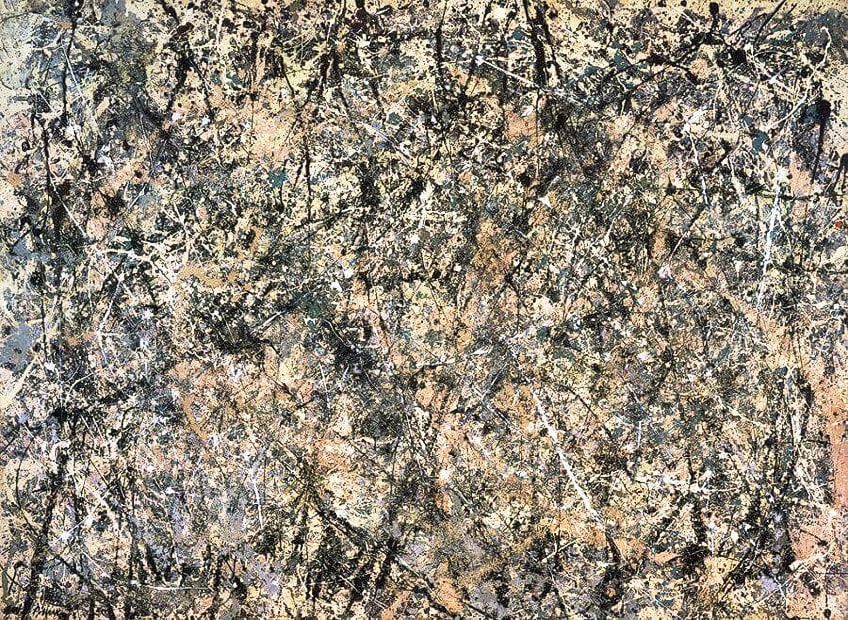
Pollock believed that his drip method was, at least in part, a way of channeling his unconscious, with the results being exposed for everyone to see on the canvas’ surface. They were, certainly, self-expressive. Many Abstract Expressionism artists whose embracing of disorder was matched by a need for control, shared Pollock’s ambivalence.
The extreme volatility in the works of several so-called “action painters,” including Franz Kline, de Kooning, and Robert Motherwell, can be partially explained by this paradox.
It contributed to the “all-over” impression seen in Pollock’s mature work and de Kooning’s late 1940s abstract works, in which shapes appear to be scattered equally around the canvas – serenity in the middle of chaos. Several Abstract Expressionist painters of that period used their art to bridge the gap between Action and Color Field Painting. Helen Frankenthaler’s early paintings were a combination of pleasing blobs of color intermingled with loosely strategic patterns.
However, she would go on to become one of the most well-known Color Field artists of our day, with her distinctive big canvases stained with large washes of color, put down in a very tactile manner using large mops and sponges.
The Next Generation
The Expressionism group of 1950s New York would have a massive impact on the art world, influencing the Second Generation of Abstract Expressionist painters with slightly different objectives. Although a crucial center did form in San Francisco, these artists were more diversified in relation to gender, socio-cultural context, and location. Greenberg invented the term “tenth street touch,” or loaded brush, to describe followers of a distinctively de Kooning approach.
Unlike their forefathers, second-generation painters focused on the objective external rather than the inside, subjective world, studying and questioning what gave objects significance.
Greenberg arranged a display named “Post-Painterly Abstraction” in 1964 to showcase these new forms that had emerged as a result of the impact of Abstract Expressionism, as well as this new generation of artists. During this period, Lyrical Abstraction and Hard Edge would also develop.
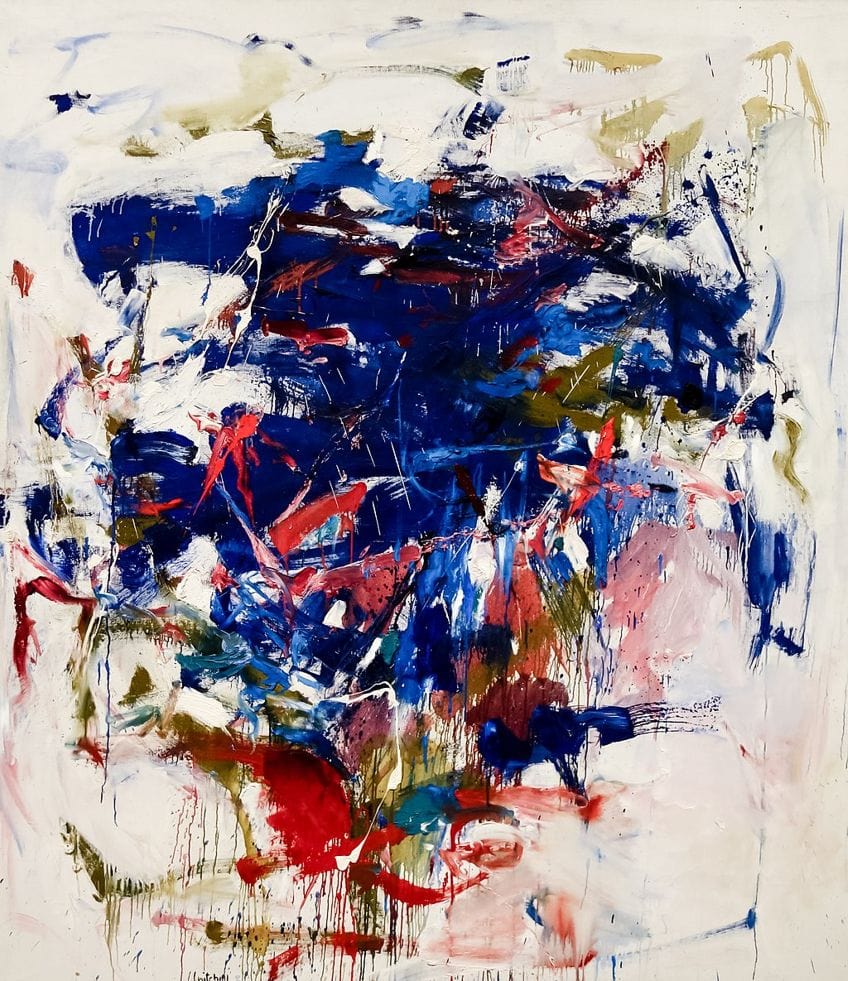
Kenneth Noland, Ellsworth Kelly, Morris Louis, Frank Stella, Joan Mitchell, and many more were among the Second-Generation Abstract Expressionists. During the 1940s and 1950s, numerous female artists in New York and San Francisco worked alongside their more well-renowned male counterparts, but women were mostly absent from the period’s literature, textbooks, and documentation. Abstract Expressionism was frequently seen as a strongly macho, white man’s domain, slicing a broad and forceful swath through the gentler qualities of fine art.
Women like Jay DeFeo, Mary Abbott, Fine, Sonia Gechtoff, Helen Frankenthaler, Judith Godwin, Elaine de Kooning, Joan Mitchell, Lee Krasner, Deborah Remington, and Ethel Schwabacher, on the other hand, were playing with material and method to break away from prior aesthetic standards.
Despite being very personalized in essence, the work of these female artists frequently offered responses in reaction to reoccurring themes such as locale, seasons, or connections from poetry, dance, and music. African American performers Norman Lewis, who used bright expressionistic palettes and calligraphic sections to convey the endless war between delight and predicament within his ethnic community, and Ed Clark, who was an initial user of molded canvases, were significant benefactors to the progressive movement who flew under the public’s radar at the time.
After Abstract Expressionism
By the middle of the 1950s, the style was outdated in various ways. The greatest triumphs of the movement were frequently founded on a fight between chaos and control. There were only a limited number of possible methods to perform it. Some artists, like Rothko and Newman, had such a minimalist style that there was little room for improvement; also, altering course would have lessened the grandeur of their distinctive signatures.
Younger painters who came after this group was less persuaded by artists who were reputed to produce one exquisite emotion after another, frequently in series, and they became bored with their heroic poses.
Homosexual painters such as Robert Rauschenberg, Jasper Johns, Andy Warhol, and Ellsworth Kelly were also dissatisfied with the New York School’s machismo and rhetoric. Others, like Johns, would learn a lot from the Abstract Expressionists and take their concern in the autographic gesture to new areas, injecting sarcasm, ambiguity, and reluctance that the older population could never have tolerated. Some, like Warhol, were too captivated by street pop culture to share the high aims of hard-drinking womanizers like de Kooning and Pollock.
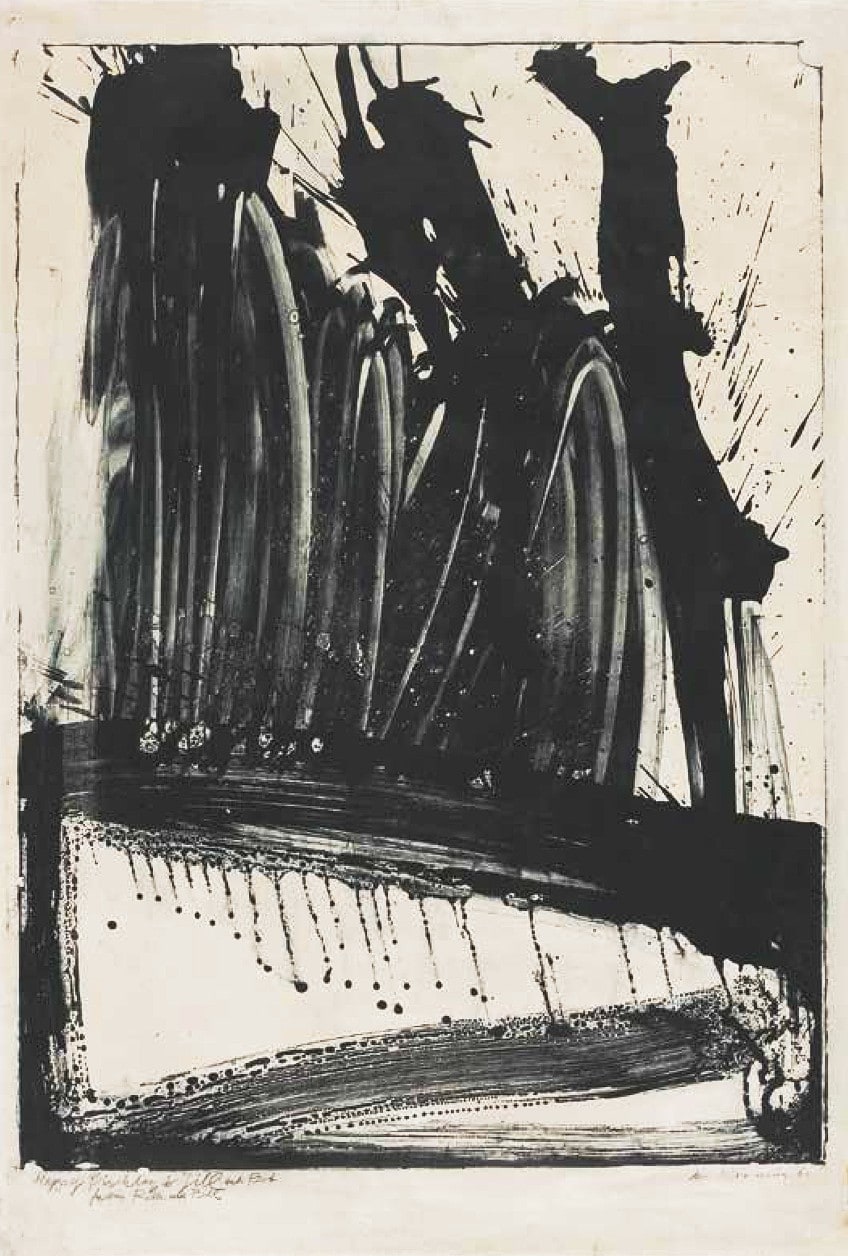
By the late 1950s, Abstract Expressionism had totally lost its place at the center of scholarly discussion, and a new generation was poised to prevail. Nonetheless, the movement left a significant legacy. Allan Kaprow noticed this as early as 1958 when he penned an essay for ART News titled “What is Jackson Pollock’s Legacy?” His response went beyond art, and Pollock’s impact was noticed in areas where performance was vital: he was crucial to both the Japanese Gutai movement and the Viennese Actionists. But as time went on, artists would begin to see the movement’s overall impact.
It was significant in the 1970s for actors such as Pat Steir, Dorothea Rockburne, Susan Rothenberg, and Jack Whitten.
Many Neo-Expressionists, like Julian Schnabel and Jean-Michel Basquiat, would be influenced by its discourse, if not its immediate example, in the 1980s. It also served as an inspiration to artists such as Cecily Brown in the 1990s. The ideas and concepts that influenced Abstract Expressionism may have lost their ability to motivate new artists, but the movement’s accomplishments continue to provide them with benchmarks to strive towards.
Important Abstract Expressionist Paintings and Artworks
After developing as artists during a period when America was experiencing economic hardship and felt isolated and provincial on a global scale, the Abstract Expressionists were finally recognized as the first really American avant-garde.
Their work was lauded for being distinctly American in spirit – enormous in size, romantic in tone, and evocative of rugged individual independence.
Although the movement has been primarily represented in historical accounts as one affiliated with the paint-splattered, courageous masculine artist, there were many important female Abstract Expressionists who emerged out of New York during the 1940s as well as the 1950s who are now regarded as essential members of the canon.
Autumn Rhythm (Number 30) (1950) by Jackson Pollock
| Date Completed | 1950 |
| Medium | Enamel on canvas |
| Dimensions (cm) | 266 x 525 |
| Location | The Metropolitan Museum of Art, New York City |
Pollock’s first “drip” painting, made in 1947, was the result of a radical new method to paint handling. Autumn Rhythm, created in October of 1950, shows the artist at the pinnacle of his abilities. Thinned paint was applied to a non-primed, unstretched canvas that rested flat on the floor rather than elevated on an easel in this nonrepresentational painting.
The pigment was applied in unconventional ways, including dripping, pouring, and dribbling.
The artist also employed rods, trowels, knives, and other non-traditional painting tools to create rich, lyrical works made of complex skeins of line. There is no focal point or hierarchy of parts in this allover composition, as every part of the surface is equally important.
The painter worked with the canvases flat on the floor, moving around frequently while adding paint and painting from all four sides.
It takes on the magnitude of an environment, encompassing both the artist as he made it and the people who come into contact with it. The work is a documentation of its creation process. Its dynamic visual rhythms and sensations of buoyant, weighty, elegant, arcing, whirling, pooling lines of color are direct proof of the artist’s new methods’ extremely physical choreography of applying the paint. The aspect of spontaneity was crucial.
Excavation (1950) by Willem de Kooning
| Date Completed | 1950 |
| Medium | Oil and enamel on canvas |
| Dimensions (cm) | 206 x 257 |
| Location | The Art Institute of Chicago |
Willem de Kooning’s most famous work, and a real representation of his Abstract Expressionism aesthetic. It has a plethora of drawing forms that are abstractions of known shapes on the outskirts of recognition: fishes, animals, jaws, eyeballs, and teeth. “I produce in this manner as I can keep adding more elements – drama, fury, anguish, love, a person, an animal, my thoughts about space,” De Kooning stated of his work.
After this frenetic accumulation of images, de Kooning would erase, scrape, and apply paint with his trademark anarchy and deliberation until he found what he was looking for.
The finished painting was a real exploration of the artist’s thinking and movements at the moment. De Kooning, who frequently used wide brushstrokes and light, pastel palettes, is still regarded as one of the most influential expressive “action painters.”
He looked for experiential authenticity in both the creation of his paintings and in the depiction of the experience on canvas.
Mountains and Sea (1952) by Helen Frankenthaler
| Date Completed | 1952 |
| Medium | Oil and charcoal |
| Dimensions (cm) | 220 x 297 |
| Location | Collection Helen Frankenthaler Foundation |
Frankenthaler became acquainted with the New York art community through her acquaintance, the writer Clement Greenberg, and spent the summertime of 1950 learning under Hans Hoffman. When Jackson Pollock’s first exhibition opened at the Betty Parsons Gallery, she was there and commented: “Everything was there. I desired to reside here. I needed to learn the language and reside there.” Which she did, working as a painter for the ensuing 60 years.
It is among Frankenthaler’s most significant creations and her first significant painting, completed when she was just 23.
Its magnitude is gigantic, and it also shows the artist’s transition from conventional materials and surfaces to her own style. She diluted oils using turpentine to the viscosity of watercolor rather than considering painting as a layer intended to sit on top of the canvas. She would then spread out wide swathes of unprimed canvas on the floor and administer the liquid washes using a very physical dance of flowing, pouring, sponging, rolling, and cleaning. The paint would fully penetrate the canvas, producing an integrated, translucent look, giving the illusion of staining.
This method gave the artist control while yet allowing for spontaneity, much like the other Abstract Expressionists. The painting, which was motivated by Frankenthaler’s journey to Nova Scotia, demonstrates her pursuit of brilliance on the canvases.
Landscapes would continue to influence her art, which has come to be associated with some of the most inventive Color Field experiments to emerge from the movement.
1957-D-No.1 (1957) by Clyfford Still
| Date Completed | 1957 |
| Medium | Oil on canvas |
| Dimensions (cm) | 287 x 393 |
| Location | Albright-Knox Art Gallery, Buffalo, New York |
Clyfford Still, like many other painters of the day, was predominantly a figurative painter in the early 1940s, creating brooding dark situations in dismal tones. By the mid-1940s, his art had begun to evolve, with dashes and jags of colorful lines appearing above his canvases.
As a non-objective artist concerned with juxtaposing diverse colors and textures into a variety of shapes, this represented his personal transition into Abstract Expressionism.
Even though he was a Color Field painter, unlike Rothko’s more straightforward color washes or Newman’s narrow lines, Still’s searing blasts and scratchy lines of vivid hues that evoked weeping and deep gashes were distinctive. This is evident in 1957-D-No.1, a vast piece that evokes natural shapes and phenomena like cave stalagmites, caverns, and other enigmatic components that lay just beyond the level of our everyday conscious perception.
Still’s compositional materials’ interactions of foreground and background evoke life’s waltz between light and dark – which Still wanted to express, a self-described “life and death melting in frightening unity.”
Bullfight (1959) by Elaine de Kooning
| Date Completed | 1959 |
| Medium | Oil on canvas |
| Dimensions (cm) | 38 x 45 |
| Location | Denver Art Museum |
Bullfight is a raucous outburst of emotion and color in a variety of brushstrokes that cover the canvas in a chaotic symmetry. According to the artist, her style is as follows: “Character is more important to me than style. Character emerges through the job. Style is imposed or applied to the work. Fashion may be a jail.”
Her art is distinguished by her desire for freedom, as well as movement, sensitivity to balance and design, and purposeful choices of color, form, and arrangement.
De Kooning was completely absorbed in the style. She was an editing associate at ARTnews when she started producing her first works, and she was among the first to publish evaluations and articles on fellow Abstract Expressionists like Franz Kline and Mark Rothko.
She was also married to Willem de Kooning, a prominent artist in Abstract Expressionism.
Essex (1960) by John Chamberlain
| Date Completed | 1959 |
| Medium | Oil on canvas |
| Dimensions (cm) | 38 x 45 |
| Location | Denver Art Museum |
Essex, a wall relief by Chamberlain that mimics an exaggerated abstract painting, is typical of several of his freestanding artworks. The artist improvised these sculptures out of junkyard automobile parts, putting them together by random intuition.
Additional colors were then used to strengthen the palette of typical vehicle paints and highlight the shattered surfaces that protruded from the wall and collected light on their shiny surfaces.
The precisely cut steel bits Chamberlain employed were fitted to produce linear rhythms similar to the motions of artists’ brushes. Chamberlain’s work, like that of sculptor David Smith, resembled three-dimensional reproductions of Abstract Expressionistic artworks, which justified his membership in the group.
How can we just carry on with life and art as before, after such a violent and horrible world war? This was the question that many artists asked themselves after WWII. In the 1940s and 1950s, New York saw the emergence of a new art style in which artists began to explore the expression of emotions and feelings via abstract, expressive mark-making and overpowering color fields. Following the atrocities of the war, several painters felt they could no longer paint figures. Instead, they sought shelter in the abstract, promoting meditation and contemplation. These painters were dubbed Abstract Expressionists.
Frequently Asked Questions
What Is Abstract Expressionism?
The Surrealist philosophy of probing the unconscious, as well as the theories of Swiss psychologist Carl Jung and his research of legends and archetypes, affected the Abstract Expressionists greatly. They were also drawn to existentialist intellectuals such as Jean-Paul Sartre. The Abstract Expressionists used massive canvases to portray emotions and universal themes in a style that harmonized with the post-war atmosphere of trauma and fear.
What Is the Abstract Expressionism Definition?
The term Abstract Expressionism refers to fresh forms of abstract art created by American painters like Mark Rothko, Jackson Pollock, and Willem de Kooning in the 1940s and 1950s. Mark-making or gestural brushstrokes, as well as the impression of spontaneity, are commonly used to differentiate it. Large-scale paintings that break from conventional techniques, usually taking the canvas off of the tripod, and utilizing unconventional materials like house paint are how Abstract Expressionism is best known.
Which Art Movement Was a Major Influence on Abstract Expressionism Art’s Formation?
Surrealism, cubism, and early modernism are three art styles that influenced abstract expressionism greatly. Surrealism was an art movement that showed the unconscious, impulsive, or illogical nature of art, whereas early modernism portrayed the emergence of contemporary industrial civilizations and the fast rise of towns and cities. Cubism was a significant art style in European painting that focused on poetry, music, and architecture.
Jordan Anthony is a Cape Town-based film photographer, curator, and arts writer. She holds a Bachelor of Art in Fine Arts from the University of the Witwatersrand, Johannesburg, where she explored themes like healing, identity, dreams, and intuitive creation in her Contemporary art practice. Jordan has collaborated with various local art institutions, including the KZNSA Gallery in Durban, the Turbine Art Fair, and the Wits Art Museum. Her photography focuses on abstract color manipulations, portraiture, candid shots, and urban landscapes. She’s intrigued by philosophy, memory, and esotericism, drawing inspiration from Surrealism, Fluxus, and ancient civilizations, as well as childhood influences and found objects. Jordan is working for artfilemagazine since 2022 and writes blog posts about art history and photography.
Learn more about Jordan Anthony and about us.
Cite this Article
Jordan, Anthony, “Abstract Expressionism – The Art of the Abstract Expressionists.” artfilemagazine – Your Online Art Source. August 3, 2022. URL: https://artfilemagazine.com/abstract-expressionism/
Anthony, J. (2022, 3 August). Abstract Expressionism – The Art of the Abstract Expressionists. artfilemagazine – Your Online Art Source. https://artfilemagazine.com/abstract-expressionism/
Anthony, Jordan. “Abstract Expressionism – The Art of the Abstract Expressionists.” artfilemagazine – Your Online Art Source, August 3, 2022. https://artfilemagazine.com/abstract-expressionism/.


